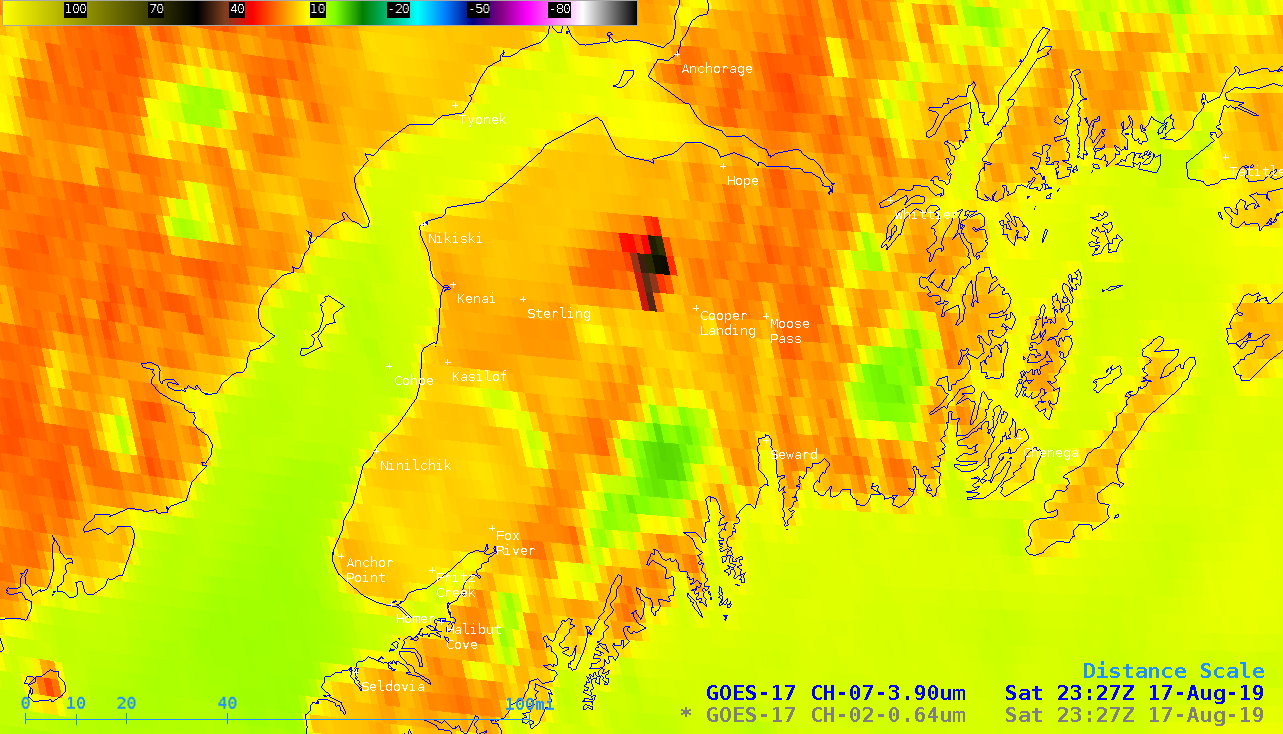Swan Lake Fire in Alaska

GOES-17 “Red” Visible (0.64 µm) and Shortwave Infrared (3.9 µm) images [click to play animation | MP4]
Strong northerly-northwesterly winds were transporting smoke from the Swan Lake Fire southward across the Kenai Peninsula and the Seward area — a time series of surface report data from Seward (below) showed that this smoke had reduced the visibility to less than 1 mile by 03 UTC (7 PM local time). South-central Alaska was experiencing drought conditions, which had worsened from the preceding week; the strong winds on this day acted to dry fuels even further, leading to a re-invigoration of the long-lived fire.
The PM2.5 Air Quality Index reached 427 at Cooper Landing, and 358 farther downwind at Seward (below). The southward transport of smoke across the Seward area and out over the adjacent offshore waters of the Gulf of Alaska was evident in VIIRS True Color Red-Green-Blue (RGB) images from NOAA-20 and Suomi NPP, as viewed using RealEarth (below).

![Seward Airport webcam image at 2358 UTC [click to enlarge]](https://cimss.ssec.wisc.edu/satellite-blog/wp-content/uploads/sites/5/2019/08/190817_2358utc_Seward_airport_webcam.png)
![Air Quality Index at Copper Landing and Seward [click to enlarge]](https://cimss.ssec.wisc.edu/satellite-blog/wp-content/uploads/sites/5/2019/08/190817_Seward_AK_airQalityIndex.png)
![VIIRS True Color RGB images from NOAA-20 and Suomi NPP [click to enlarge]](https://cimss.ssec.wisc.edu/satellite-blog/wp-content/uploads/sites/5/2019/08/190817_noaa20_suomiNPP_viirs_trueColor_SwanLakeFire_AK_anim.gif)